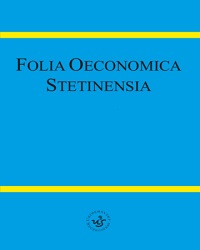Methods of a Multivariate Analysis of Non-Metric Data in Evaluating the Generational Perception of Social Characteristics
Methods of a Multivariate Analysis of Non-Metric Data in Evaluating the Generational Perception of Social Characteristics
Author(s): Agnieszka StanimirSubject(s): Supranational / Global Economy, Methodology and research technology, Family and social welfare, Demography and human biology, Socio-Economic Research
Published by: Wydawnictwo Naukowe Uniwersytetu Szczecińskiego
Keywords: generations Y and X; BB; correspondence analysis; factor analysis; quality of life;
Summary/Abstract: Research background: The search for factors influencing the evaluation of the quality of life in terms of subjective and objective socio-economic aspects was the background of the study. The search for perfect multivariate statistical methods in the describing of the assessments made by respondents in variable groups, as well as the categories was carried out. Purpose: The aim of the study was to recognize the natural areas of transferring subjective satisfaction with the level of social factors in the three groups describing: household, country of residence, and the EU. The determined natural relations between the factors were then compared with the established sets of those factors. The characteristics of behaviour were compared in three generations of the EU. Research methodology: The Standard Eurobarometer, autumn 2018, provided data describing adults from the generations Y, X, and BB. In the analysis a factor analysis and correspondence analysis were used. Results: The effect of the used methods is a multidirectional image of the evaluations made by the EU Generations Y, X and BB in the areas of an individual’s functioning: direct (the household), close (the country of residence), and further (Europe and the EU). Novelty: The conducted analysis indicates the need to use diverse methods in order that the assumed research objectives are thoroughly realized. The article indicates the possibility of modifying the approach in using the Burt matrix in connection with concatenated contingency tables.
Journal: Folia Oeconomica Stetinensia
- Issue Year: 20/2020
- Issue No: 1
- Page Range: 390-407
- Page Count: 18
- Language: English

